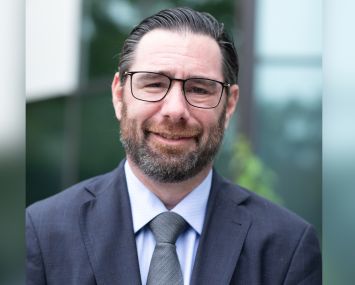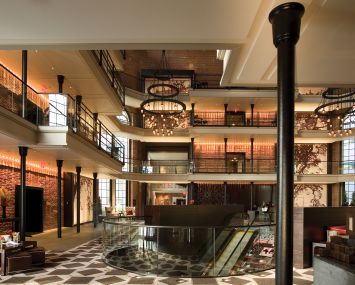Times Square as a Residential Neighborhood? It’s Not So Far-Fetched.
Fresh conversion incentives and the pandemic’s office upheaval could finally tip the Crossroads of the World
By Zoe Rosenberg January 21, 2025 12:21 pm
reprints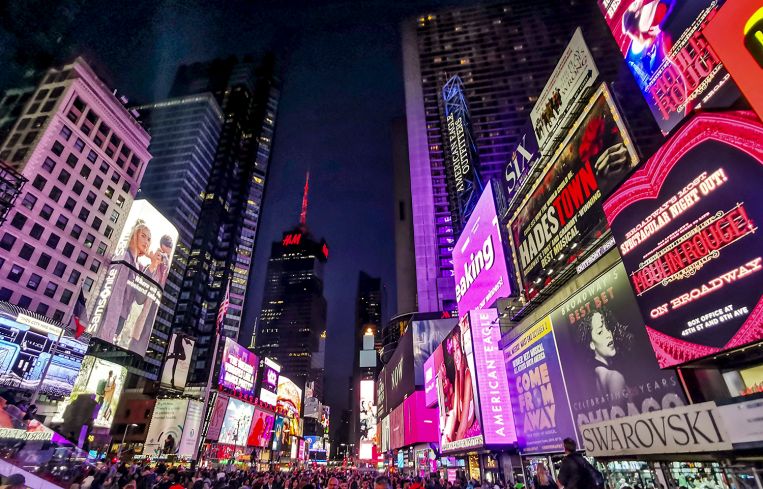
The very crowds, noise and garish lights that draw tourists to Times Square are often anathema to New Yorkers themselves.
But, with fresh development incentives — including for office-to-residential conversions, as well as an acute housing shortage and a post-pandemic shift in how New Yorkers think about neighborhoods — the stars might be aligning to make the Crossroads of the World more than just a place to pass through.
Times Square already attracts residents who value the ability to walk to work and the connectivity the area offers via nearby major transportation hubs, including the Times Square subway station with its nine lines. To brokers and developers, turning the area into a desirable residential neighborhood is largely a matter of changing people’s perception.
Other neighborhoods in the city have been through similar transformations recently. Take the Financial District. Once a ghost town after business hours, it’s now an all-day neighborhood that is home to a bevy of condominiums and rentals built since 2000 (including the city’s largest completed office-to-residential conversion to date). Times Square has all the makings of the city’s next great live-work neighborhood, according to the experts.
“There’s no longer this idea of what’s a residential neighborhood and what’s a commercial neighborhood — the Financial District is a perfect example of that,” Kevin Draper, a New York historian and co-founder of New York Historical Tours, told Commercial Observer. “If you would have said 20 years ago that the Financial District was going to be a residential neighborhood, I would have said I don’t think that’s going to happen. And I think that’s what it’s going to be with Times Square.”
There has never been a more pressing time for every neighborhood in the city to lean more residential. The rental vacancy rate in Manhattan was around 3 percent in December, according to brokerage Douglas Elliman. That’s about standard, but at the same time rents are up about 20 percent over pre-pandemic levels, said appraiser Jonathan Miller, author of the much-studied Douglas Elliman housing reports. Rising rents have exacerbated an already dire situation, where the workers who help New York run often can’t afford to live there.
In early December, the city passed the Adams administration’s City of Yes plan that aims to bring 82,000 new units of housing to the city over 15 years through a variety of zoning changes. It’s a boon for developers, with Bill Rudin saying at a New York University panel on the day of its passage that it would “open up a floodgate of conversions.”
The state also recently passed 421a successor 485x, a program aimed at creating affordable housing in the city by offering real property tax exemptions to developers, and 467m, a commercial conversion tax exemption program that requires 25 percent of units to be affordable in perpetuity.
“City of Yes and 467m are breathing life into the multifamily housing market that desperately needs new inventory,” Robin Schneiderman, managing director of Brown Harris Stevens Development Marketing (BHSDM), told Commercial Observer.
According to data tracked by BHSDM, there are 25 office-to-residential conversions that were either completed, in planning stages, or under construction in 2024 across New York that comprise about 11,000 new residential units. Of those, about 300 are poised to become condominiums.
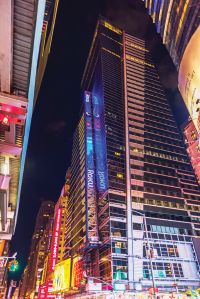
That doesn’t include the nearly 950 units that Apollo Global Management along with partners SL Green and RXR want to bring to Times Square. In late December, the group filed plans to convert 5 Times Square, a commercial building that is currently home to tenants such as streaming technology firm Roku and Asian household goods and snacks retailer Miniso. Plans call for transforming 5 Times Square into a residential and commercial mixed-use building with several floors of residences, coworking spaces and a party room, among other amenities, at a cost of $95 million. Gensler has been retained to design the project.
The conversion could be a major boon to Times Square, said Tom Harris, president of the Times Square Alliance, the local business improvement district.
“We’re excited about the opportunity of repositioning that office tower into a combination of residential, retail and office space,” Harris said, speaking on behalf of the Alliance. He said residential developments and conversions like this one in the immediate Times Square area will help recast the neighborhood as a place to not just work or visit, but also to live.
“We saw, especially during the pandemic, that neighborhoods that were mixed-use — those live, work and play neighborhoods — recovered better, quicker,” Harris said.
That the area surrounding Times Square, from 40th to 45th streets and Sixth to Ninth avenues, can be a livable neighborhood isn’t unproven. People willing to endure noise and crowds have lived in the area for decades. But a new crop of residential buildings is setting out to establish that the neighborhood can, in fact, be a peaceful place to live.
The Ellery, on West 43rd Street between Eighth and Ninth avenues, is a 32-story rental tower with a 40-foot-long pool that sprouted in place of a former parking lot and the aging headquarters of 1199SEIU Health Care Workers Union. Developer Taconic Partners and National Real Estate Advisors in 2018 signed a 99-year ground lease with the union for the site, and secured $204 million in construction financing in 2021.
The demand for high-end rentals in the area is there, said JR Sena, managing director at Compass Development Marketing Group, which is marketing the Ellery. Its 330 rentals hit the market last May and are now 85 percent leased. Handel Architects designed the building to provide tenants a sense of relief from the concrete jungle beyond its front doors with soothing interior design that includes a lobby olive tree and a 10,000-square-foot garden that connects residents to nature.
“I too, am one of those people who are pleasantly surprised by how much design and attention to detail can change your experience in the neighborhood,” Sena said.
The building is heavy on one-bedrooms that rent for around $6,000 per month, signaling to Sena that renters prize the building’s design and amenity offerings as well as its location.
“We’re seeing renters who are less specific about where they want to live in the city, and more so into having connectivity to experience the entire city very easily,” Sena said. He noted that a lot of people who live in the building value the ability to walk to work — be it in nearby Midtown or Hudson Yards (which includes a forest of office and mixed-use towers that didn’t exist 10 years ago).
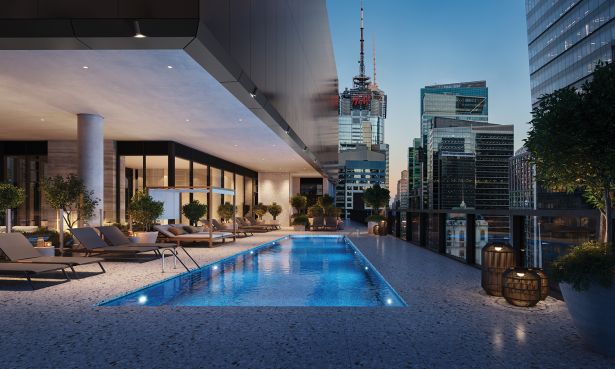
Additionally, the Ellery’s seeing an international contingent of renters “who have seen Times Square on TV all their lives, and it’s sort of an iconic place to live and feels very cool, if that’s your first home in New York.”
Schneiderman said he’s seen a lot of interest in the area from empty-nesters or folks looking for pieds-a-terre. They have options in the LightSquare Condominium on 44th Street between Eighth and Ninth avenues, a new building with 29 units. Prices range from $890,000 for a one-bedroom, one-bathroom unit up to $3.5 million for a three-bedroom, two-and-a-half bathroom.
And then there’s area stalwart the Platinum, on the northeast corner of West 46th Street and Eighth Avenue. The 43-story building developed by SJP Properties in 2008 has 220 condos ranging from studios to duplex penthouses. Available residences range from $1.2 million for a one-bedroom, one-and-a-half bathroom to $7 million for a four-bedroom, seven-bathroom penthouse.
The number of residences planned for 5 Times Square, which would take the address 592 Seventh Avenue, suggests it’s likely the units will be rentals and not condos, said experts who spoke to CO. A representative for RXR said the developers would not comment on the plans.
Times Square’s connectivity, one of its greatest assets, does complicate new development, said Andrew Schwartz, senior vice president of residential asset management for Taconic Partners. Schwartz noted that building atop transit tunnels — of which Times Square has many — is logistically challenging.
“If you’re developing somewhere where the [Metropolitan Transportation Authority] or Amtrak or Metro-North has a tunnel or some type of access that runs underneath or close to the property, there’s all types of approvals that you have to secure,” Schwartz said. “Logistically, building in a neighborhood like this can be difficult, but, obviously, it’s done every day.”
Another challenge? The negative perceptions that cling to Times Square. Schwartz grew up in New York in the 1980s and wasn’t allowed to go there, he said.
“Then came the Giuliani and Bloomberg administrations, and suddenly Times Square turned into Disney World,” he said.
Ultimately, Schwartz said he thinks the change — which included dramatic drops in crime — has been good for the area. It makes the leap from tourist destination to residential destination for New Yorkers that much more feasible. A casino that SL Green and its partners, including music mogul Jay-Z, are proposing for part of the office tower at 1515 Broadway might add to the appeal, though a state licensing decision on the proposal, plus its development, is years off.
In a city where housing supply is so constrained, using sites to their best potential is becoming increasingly important, too. The former parking lot and aging office building that occupied the site on which the Ellery was built did not serve the area’s highest and best use, Schwartz said. Similarly, before Apollo, SL Green and RXR filed for the partial residential conversion at 5 Times Square, the office building was 80 percent vacant.
Any Times Square residential renaissance might in the end come down to one thing, then. Draper, the historian, summed it up. “It’s the No. 1 idea that’s been for a long time: We need more housing.”
